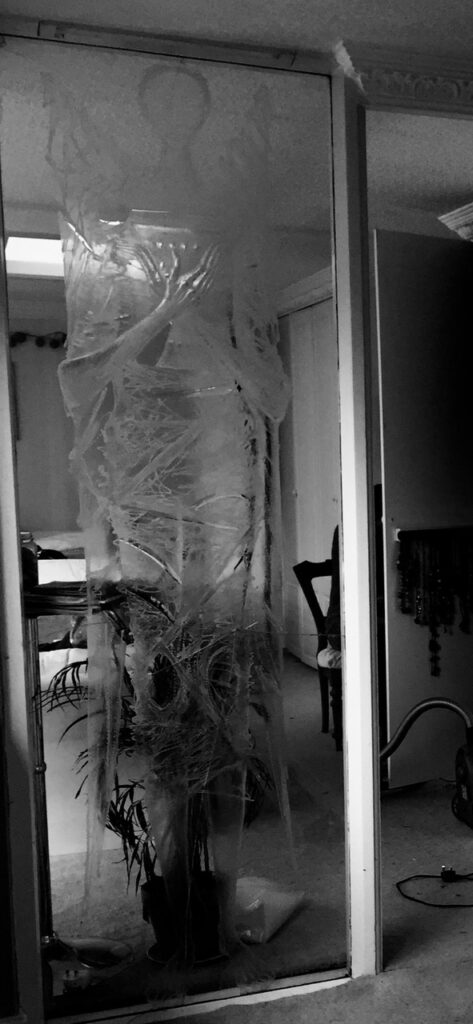
A recent conversation revealed an interesting story about the Hutton Screen at the Cathedral.
The conversation was between CovSoc founder member, Paul Maddocks, and author Adam Wood, known for his recent book about the Elephants of Coventry.
Adam told Paul that when he and his partner moved to Coventry a few years ago they first rented a house in Kenilworth. The house was owned by a builder and included an engraved window from the new Cathedral. The builder was a bit vague but told him that he had been working at the Cathedral at the time and got it cheap as it was broken and being replaced.
Paul asked if Adam had a photo of the glass and the photo above is what he sent him.
It can be seen that it is one of the engraved angels from the bottom layer of the Hutton Screen. The photo below shows the glass in situ.

Artist Martin Green, who is working with the Cathedral, explained that there is a reference to this broken glass in Margaret Brentnall’s book, “John Hutton, Artist and Glass Engraver” (page 112).
“On 18 August 1961 John wrote to Basil Spence’s office notifying them that all the glass, with the exception of the bottom row, was ready and stored at London Sand Blast. In September the panels were taken to Coventry for glazing, and in a letter of 5 September John informed Captain Thurston that he was working on the last standing angels: “They are not likely, I understand, to be installed till January or February because they are in a pretty vulnerable position and the later they are put in the better, from the point of view of damage.” In spite of this precaution, one of the standing angels was broken and had to be replaced at the last moment.”
Martin explains that all this while the scaffolding obscured the West Window, but once it had been removed Basil Spence was able to see for the first time the realization of one of his key concepts.
From inside, the glass looked marvellous, but from the outside he was dismayed to find that he could not see right through the bodies of the saints to the liturgical east end where Graham Sutherland’s tapestry was to hang. What he actually saw was a dramatic reflection of the castellated top of the ruined walls of the old cathedral over which the angels in the centre of the screen seemed to hover. At night, when the tapestry is strongly lit, the original intention is strikingly fulfilled, but he felt that the overall it was too dense.
So, the scaffolding was reinstalled for a second time and Hutton and his two sons eliminated the densest parts to reveal the window that we know today.
Martin says “It would be fascinating to see this glass next to the others in the screen, because it was never installed, it is an example of the finish that Hutton had originally intended.”
